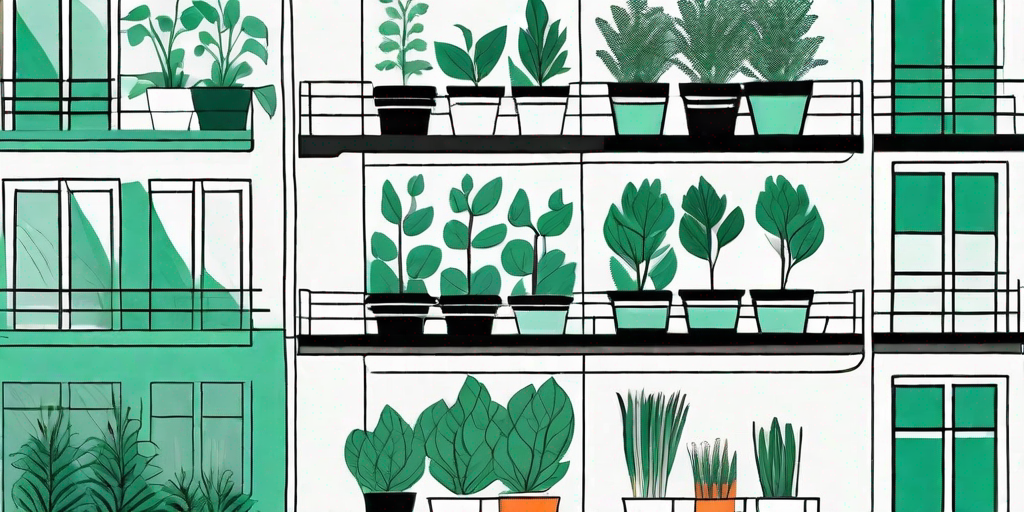
If you're a city dweller with a green thumb, or simply someone who loves fresh greens but lacks the space for a full-blown garden, then this guide is for you. We're about to dive into the world of container gardening, specifically focusing on the leafy green powerhouse that is spinach. So, buckle up, grab your trowel, and let's get growing!
Why Spinach?
Spinach, the leafy green known for its role in Popeye's impressive biceps, is a nutrient-dense superfood that's easy to grow and even easier to eat. It's packed with vitamins A, C, K, and several B vitamins, not to mention a host of other nutrients like iron and calcium.
But why spinach for container gardening? Well, spinach is a cool-weather crop that doesn't require a lot of space to grow. It's also quite hardy and can withstand a variety of conditions, making it an ideal choice for the novice gardener or the space-challenged urbanite.
Choosing Your Spinach Variety
Now that we've convinced you of the merits of spinach, let's talk about the different varieties available. There are three main types of spinach: savoy, semi-savoy, and flat-leafed. Each has its own unique characteristics and benefits.
Savoy spinach has dark green, crinkly leaves that are great for salads and stir-fries. Semi-savoy is a hybrid with slightly less crinkly leaves, making it easier to clean. Flat-leafed spinach, as the name suggests, has smooth leaves and is the easiest to clean of all three. It's also the type most commonly used in packaged spinach products.
Choosing the Right Container
Once you've chosen your spinach variety, it's time to pick your container. The good news is that spinach isn't too picky about its home. You can use anything from a traditional pot to a window box or even a hanging basket. The key is to ensure that the container is deep enough for the roots to grow (at least 6-8 inches deep) and has good drainage.
Remember, spinach likes to keep its feet (or rather, roots) cool, so choose a container that won't heat up too much in the sun. Light-colored containers are a good choice as they reflect sunlight, keeping the soil cooler than dark-colored containers.
Planting Your Spinach
Now that you've got your spinach seeds and container, it's time to get planting. Spinach can be sown directly into the container, or you can start seeds indoors and transplant them later. Either way, the process is pretty straightforward.
Fill your container with a good-quality potting mix, leaving about an inch of space at the top. Scatter your seeds over the surface, then cover them with a thin layer of soil. Water well, but be careful not to wash away the seeds. Spinach likes a moist environment, so keep the soil damp but not waterlogged.
Place your container in a spot that gets plenty of sunlight, but not too much heat. Spinach prefers cooler temperatures, so a spot that gets morning sun and afternoon shade is ideal. If you're growing spinach in the warmer months, you might need to move your container to a cooler spot or provide some shade during the hottest part of the day.
Caring for Your Spinach
Once your spinach is planted, it's all about maintenance. Regular watering is key, as spinach doesn't like to dry out. However, be careful not to overwater, as this can lead to root rot. A good rule of thumb is to water when the top inch of soil feels dry to the touch.
Spinach is a fast grower, so you'll want to start harvesting as soon as the leaves are big enough to eat. This usually happens about 6 weeks after planting. To harvest, simply cut the leaves at the base, leaving the crown intact. The plant will continue to produce new leaves for several weeks.
Common Spinach Growing Problems and Solutions
While spinach is relatively easy to grow, it's not without its challenges. Here are some common problems you might encounter and how to solve them.
Bolting
Bolting is when the plant starts to produce seeds prematurely, usually as a response to hot weather. When spinach bolts, the leaves become bitter and the plant stops producing new ones. To prevent bolting, keep your spinach as cool as possible and harvest regularly.
Leaf Miners
Leaf miners are tiny insects that burrow into the leaves of your spinach, leaving unsightly trails. To prevent leaf miners, cover your spinach with a floating row cover or use an organic insecticide.
Downy Mildew
Downy mildew is a fungal disease that causes yellow spots on the leaves of your spinach. It's most common in wet, cool conditions. To prevent downy mildew, ensure your spinach has good air circulation and avoid overhead watering.
FAQs
- Can I grow spinach indoors?
Yes, spinach can be grown indoors, provided it gets enough light. A south-facing window is ideal. If you don't have enough natural light, you can use a grow light.
- How often should I water my spinach?
Spinach likes to stay moist, so water whenever the top inch of soil feels dry. Be careful not to overwater, as this can lead to root rot.
- Can I grow other vegetables in the same container as my spinach?
Yes, spinach makes a good companion plant for many vegetables, including strawberries, radishes, and onions. Just make sure the container is large enough for all the plants.
So there you have it, a comprehensive guide to growing spinach in containers. With a little care and attention, you can enjoy fresh, homegrown spinach no matter how small your space. Now, go forth and grow!











